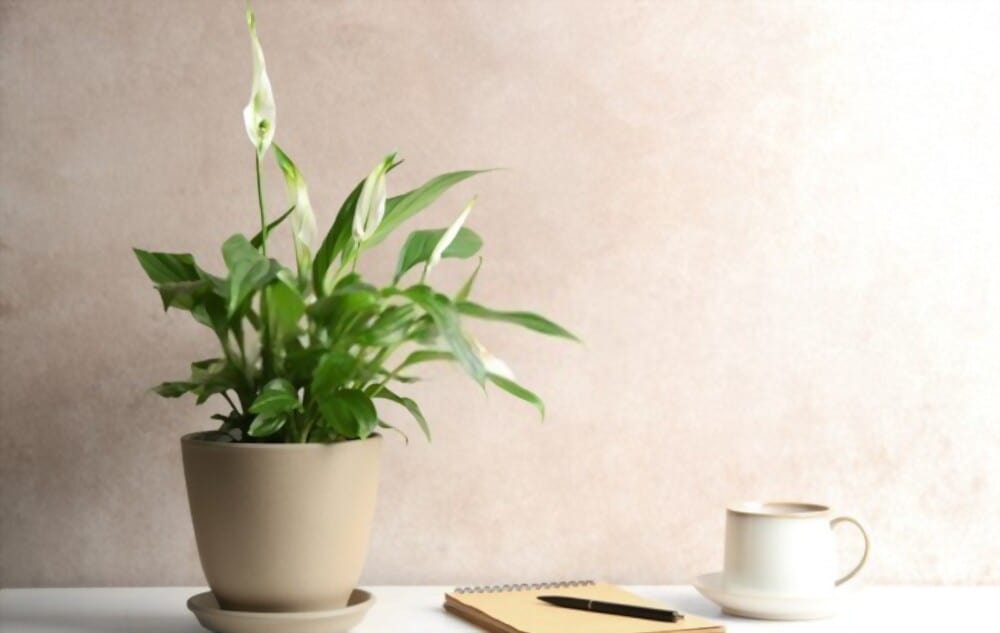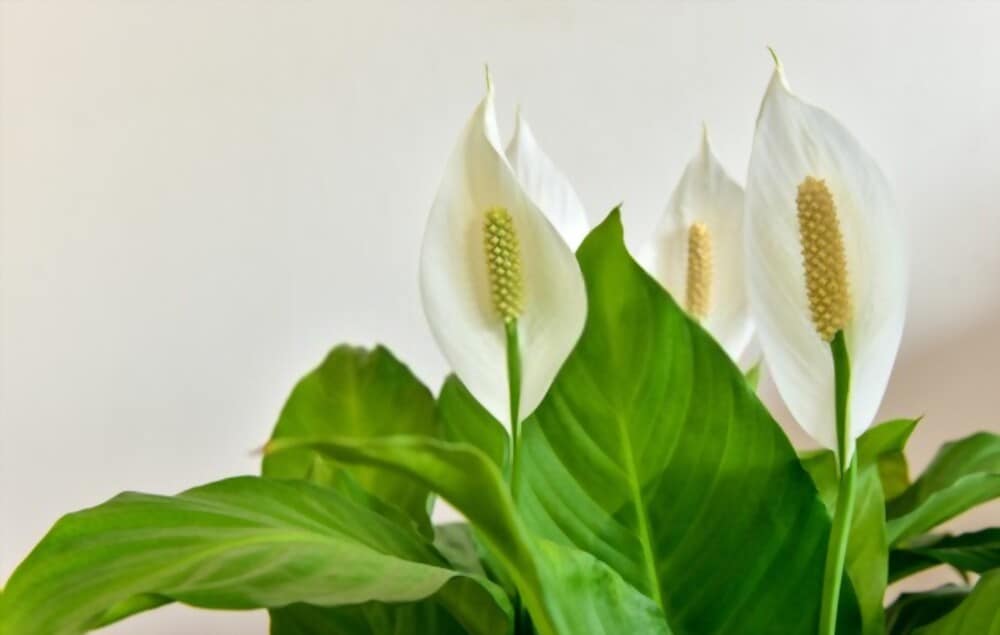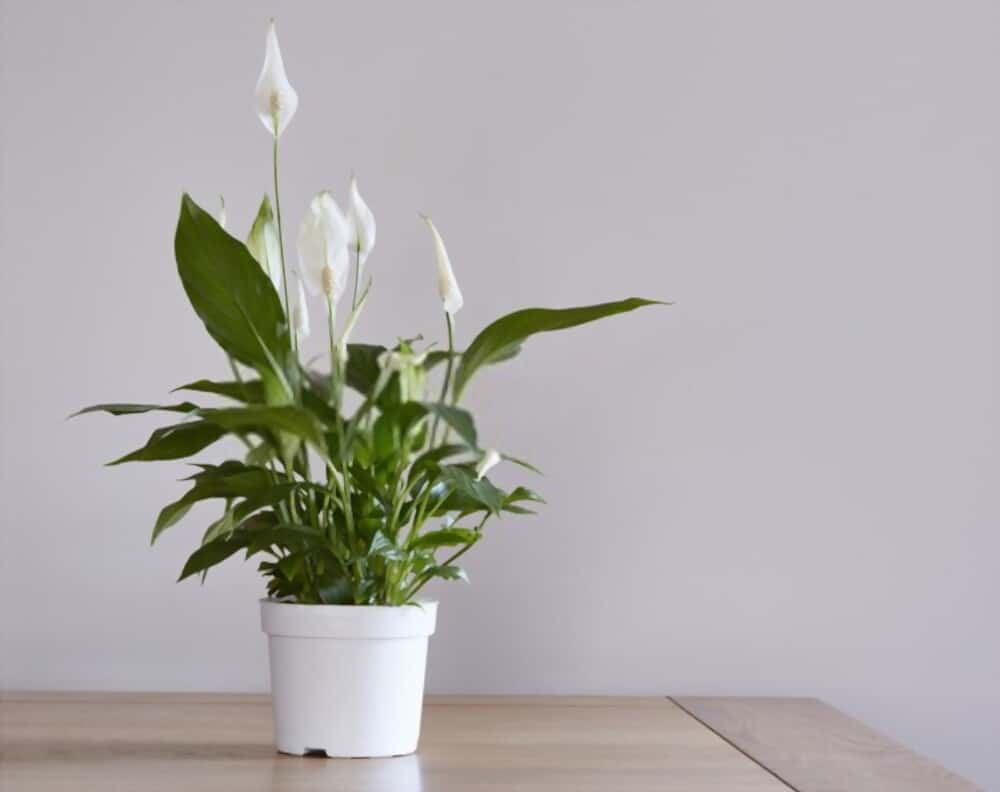Are you a gardener? Are you trying to find the most beautiful, low-maintenance plant? The easiest to maintain and most attractive indoor plants, peace lilies also have the added benefit of purifying the air in the house.
Spathiphyllum, popularly known as peace lilies, is a plant that is not a true lily. However, they are given this name because they are members of the Araceae family and have flowers that resemble calla lilies. The flowers’ outer layer, which is white and hood-like, resembles a white surrender flag. Peace lilies come in a variety of sizes, and the majority of them are used as floor plants.
Peace lilies can grow in cactus soil because it offers the plant strong root development and good drainage and aeration. To provide the ideal growing circumstances that peace lilies are used to in the wild, a variety of soil amendments will be added to the soil.
Do you fully understand what peace lilies are? So, the plant will now be potted. What type of soil is best for the plant? How should the soil mix be made? Continue reading for a comprehensive guide on growing peace lilies in various types of soil to learn the answers to all these queries.
When I repot my succulents, I always use Professional Growers Potting Soil Mix. I am confident that my plants will live when I repot them using this inexpensive dirt. Clicking here will take you there.
Table of Contents
The Best Soil for Peace Lily
In the wild and in open spaces with little ground cover and sufficient soil moisture for healthy root growth, peace lilies can grow.
These settings’ soil, which is made of decayed leaves, charcoal, and dried branches, has a weak acidity of pH 5-5.5.
The light, loose soil that allows for adequate drainage is preferred by peace lilies. The plant might become ill from either too little or too much moisture in the soil. As a result, the peace lily suffers.
Be cautious when you go to the store to acquire soil for your peace lily plant because a wide range of soil substrates are offered.
After purchasing, you can add sand, charcoal, vermiculite, and brick chips to the loose texture soil to aid with soil drainage. Crushed tree bark is another useful ingredient for aerating the soil where peace lilies grow.
When repotting, add a touch of modern design to your house with this selection of lovely planters from Amazon that are reasonably priced.
What’s the recommended soil for peace lilies?
Straight from Amazon, you may purchase ready-made soil mixture for peace lilies. These mixtures already contain the elements required for the soil to have appropriate drainage and aeration. Here are some of the best ready-made soil advice.
Fast draining pre-Mixed Blend of Cactus soil
This soil is made up of a variety of organic substances that supply potassium, phosphorus, and nitrogen. All members of the arid family benefit most from this type of soil. Because of the delayed release of nutrients, this soil mixture provides the sustenance for plants over an extended period of time.
Cactus soil mix
The most popular soil mixture for peace lilies is cactus soil. Therefore, since this soil blend provides adequate drainage and aeration, you can utilize it. You don’t need to sterilize this soil mixture because it has been thoroughly sterilised.
Organic potting Soil for Succulents and Cactus
This soil mixture is fairly pervious. Rhizomes provide good airflow and drainage. Most effectively lessens stagnant water and prevents rhizome rot. When compared to the conventional soil, it is lightweight.
Factors that make cactus soil the best soil mix.
Are there any places besides the Agriculture plant hardiness zones where peace lilies can grow? How? What prerequisites must be met for this? Find the proper type of soil that satisfies the requirements below if you want to grow this plant in your home.
Drainage
In the moist, well-drained soil, peace lilies flourish. Continuously moist soil guarantees that the roots receive enough water and that the glossy green leaves are standing upright. The plant may grow and bloom fully thanks to the moist soil.
In contrast, the plant can become ill and have its growth slowed by the damp soil. When the water flows through the cracks, air in the water helps the plant breathe.
The leaves will turn brown and wilt if the soil is overwatered. Water your peace lily plant as soon as the topsoil becomes dry, letting the water run through the drainage holes in the pot. Remove the plate that is containing the water so that it can be emptied.
Composition
Another critical element that promotes the growth of the peace lily plant is the makeup of the soil. So let’s examine the essential elements that the ideal peace lily soil must include.
- Vermiculite
- Perlite
- Leaves humus
- Sand
- Minerals
- Coco coir or peat moss
Clay pebble
Do you have trouble locating soil that has all these ingredients? Do not fret! The home-made soil is effective as long as it has the right moisture content and drainage capabilities. Furthermore, you can use any easily available soil to place these components.
You’re not limited by gardening; simply use your imagination and go for it!
Aeration properties
Additionally crucial are loosening the soil and enabling adequate airflow. The water is evenly dispersed by the loose soil, which also manages to stay moist.
How should the peace lily soil be aerated? The procedure is really quite easy. Simply make a few holes in the dirt with a chopstick by inserting it into the ground. The perforations will let water to drain out, guarantee the right amount of air supply, and facilitate easy plant growth.
pH
Peace lilies thrive in slightly acidic soil with a pH of 5.8 to 6.5.
The reasonably priced Trazon Soil 3-in-1 Meter can be used to measure the soil’s pH and moisture content. It checks the pH as well as the amount of moisture and light. Clicking here will take you there!
Readymade Potting mix
Instead of making your own potting mix at home, you should get it from the neighboring store. The key to buying the ideal soil mix is to read the label and determine if the necessary components are there or not.
Quick advice:
- The potting mix with peat moss, vermiculite, Perlite, and bulking agents like coir is preferred.
- Because peace lilies don’t require a lot of fertilizer, you should never purchase potting soil that already includes fertilizer. After potting the plant, you can apply fertilizer as needed.
How Your Own Potting Mix at Home
You can’t seem to locate a great potting mixture from a reliable vendor. Are you unhappy with the pre-mixed soil? Looking for the ideal formula to make your own mix? It is simple to make at home. Let’s mix your own drink at home.
The essential step in promoting peace lily growth is the creation of the potting soil mix. Do take into account the unique alterations if you want to make your peace lily plant healthier and ensure its robust growth. The flowers might not blossom profusely in the absence of the necessary modifications. What must you do now?
Ingredients
Let’s keep things easy. To improve drainage, you can add sharp sand to a basic potting mixture. The perlite particles, which resemble styrofoam pieces, should already be present in the potting soil when it is purchased.
Vermiculite can also be added to the mixture since it helps the soil retain some water while still allowing for drainage and aeration.
You can read our post on the advantages of perlite and vermiculite for the soil.
Step by step instructions
- The soil mixture can be prepared using the next ways.Pick up a pot that has drainage holes.Brick chips should be evenly distributed in the bottom of the pot since they will improve drainage.In the tank, combine all the soil materials in an equal amount, then transfer it to the pot.Lastly, check that the pot’s drainage openings are functioning properly.
- Pick up a pot that has drainage holes.
- Brick chips should be evenly distributed in the bottom of the pot since they will improve drainage.
- In the tank, combine all the soil materials in an equal amount, then transfer it to the pot.
- Lastly, check that the pot’s drainage openings are functioning properly.
What other soil can you use for a peace lily?
For the planting of peace lilies, the kind and quantity of soil are unimportant; however, any potting soil will do just fine.
The greatest soil for peace lilies to grow, however, is one that quickly drains. Mixing vital soil elements like Perlite, coarse sand, and pumice will help the drainage if you want to add a lot of water.
Have you been extraordinarily busy for a while? Do you not have the time to care for your indoor plants? The best course of action here is to amend the soil mixture with some vermiculite, peat moss, and coco coir while maintaining the necessary hydration.
Common problems of peace lily plant
Thankfully, planting a peace lily is a rather simple task. You won’t encounter any problems if you follow the appropriate procedures. However, care can occasionally be compromised, which can lead to several major issues such
- The soil develops a yellow-brown crust and the watering issue is brought on by a lack of water.
- The leaves may fall off due to underwatering, abrupt temperature fluctuations, and shock from repotting.
- Unreliable plant maintenance could cause the leaves to turn yellow.
- Inadequate lighting prevents the plant from receiving the correct nutrition and prevents it from blossoming.
- The leaves could turn black in extremely cold or hot temperatures.
Conclusion
Forest and tropical vegetation make up peace lilies. They don’t require much upkeep and can live for years.
You don’t need to give the plant a lot of attention. Peace lilies are perfect for your office and room because they need very little light to grow. The plant’s ability to purify the air is beneficial to human health as well.
You can go ahead and grow your preferred peace lilies within your house.
Now that your peace lily has the ideal mixture. You’re not sure where to put it in the house. Find the best and safest locations to place your peace lily throughout the house by consulting this advice.
FAQ
Do peace lilies grow better in water or soil?
Peace lilies don’t want their soil to completely dry out, but they also won’t thrive in perpetually damp soil because that encourages the growth of the fungus that causes root rot.Use an all-purpose, well-draining potting soil. The soil has to be able to retain moisture and gradually lose moisture over time.
How often should you change peace lily water?
Every two weeks, change the water in your peace lily. Never let the roots dry up or be out of water. They will be hurt by this.
Do peace lilies need perlite?
The most crucial thing to keep in mind is that peace lilies require soil that drains well. It is essential to include sand, vermiculite, perlite, or any other component that enhances drainage.
How do you use coffee grounds for peace lily?
Not all coffee grounds work, despite the fact that they can often increase the acidity of your peace lily. The coffee grinds must be added without being cleaned because of their greater acidity. Also, don’t wait several days to throw the grounds into the soil; do it immediately (or weeks). The more acidic they are, the fresher they are.
How do you make potting soil for a peace lily?
In order to boost aeration, you can combine 2 parts ordinary indoor potting mix or cactus mix with 1 part bark or perlite if you need to pot your peace lily yesterday and don’t have time to order a specialised mix or a lot of supplies. Any supermarket with a gardening section should carry these ingredients.



